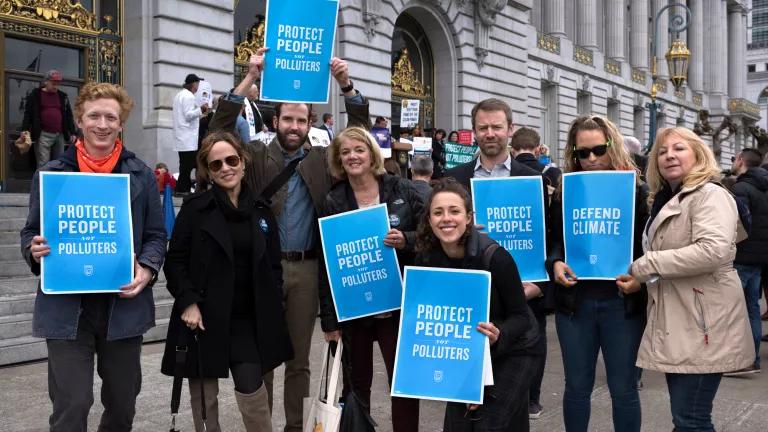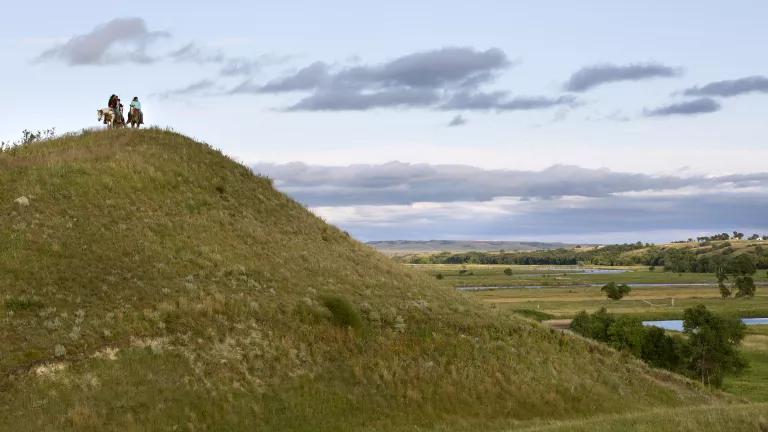Water Rights, and Wrongs, in California
I’m grateful to the Stanford Environmental Law Clinic, Winnemem Wintu Tribe, Shingle Springs Band of Miwok Indians, Little Manila Rising and Restore the Delta for compiling this clear and compelling history of California water.

California’s water laws and history are a fascinating reflection of the values of our State. On the one hand, we have some of the most progressive, far-reaching laws on the books – laws that direct that water be used for the public good and that how we use our water resources can and should change over time to reflect changing public values. On the other hand, it often seems that our decisionmakers are utterly captive to entrenched, powerful interests that hoard water for private gain and deprive most of us of the value of this public resource, despite overwhelming public support for prioritizing the use of water to provide clean drinking water for all and to protect public resources such as healthy rivers and fisheries.
It’s time that California’s water management caught up with current realities and lived up to the laws on the books. But that is unlikely to happen until more people understand the violent, racist, and exclusionary history that props up our current system of water rights and understand that we are not stuck with this system – we can choose to reject it and adopt, instead, a system of water management that reflects current societal values.
That’s why I’m so grateful to my friends at the Stanford Environmental Law Clinic, Winnemem Wintu Tribe, Shingle Springs Band of Miwok Indians, Little Manila Rising and Restore the Delta for compiling this clear and compelling history of California water and outlining some of the tools in existing law for updating California’s water management. To help spread the word, I’m summarizing and reproducing portions of their amicus brief below, starting with how we got here and then looking at the broad authorities granted in California law for righting our sinking ship. But I encourage anyone interested to read the brief in full, for a more complete and detailed history of our violent roots. In later blogs, I’ll highlight how our failure to update our racist water rights system continues to result in absurd and inequitable water allocation decisions today.
First in Time, First in Right (But Only If You’re a White Immigrant)
California’s system of water rights is built on the tenet of prior appropriation, which can be summed up as “first in time, first in right.” The gist of it is that those people who have been here the longest, and who have beneficially used and relied on California’s water resources for the longest, have the highest or most “senior” claim of right to use of that water. Those claims trump more “junior” water users, and senior water rights holders get their full diversion of waters from our rivers and streams satisfied in drought years like this one before any water at all is provided to more junior users.
That’s the theory anyway. In reality, many people who have lived in California for eons and who have beneficially used and relied on California’s water long before today’s so-called “senior water rights holders,” have zero claim of right. As Stanford’s brief explains,
Among the communities excluded from water rights claims are the original Indigenous inhabitants of the state, whose inherent water rights have been largely erased since white settlers arrived on their ancestral lands. Also excluded are many people of color, who were effectively barred from water rights through the first half of the twentieth century by the state’s discriminatory property laws, as well as discrimination in civil rights, employment, education, and housing, which segregated and impoverished them.
Exclusion of BIPOC Communities
The exclusion of Native Americans and people of color from owning water rights in California was not an historical accident, but a deliberate campaign by lawmakers, politicians, and wealthy landowners for over a century to dispossess more “senior” inhabitants of their rights. In 1850, when the Gold Rush was well underway, the California Legislature passed a law which sanctioned “the removal of Tribes from their traditional lands, separation of children from their families, and creation of a system of indentured servitude as punishment for minor crimes.” The State also funded private and state militias to kill Native Americans in a “program of genocide” carried out alongside the “ruthless flood of miners and farmers” who “annihilat[ed] the natives without mercy.” While the “violent removal of Indigenous Peoples from their ancestral lands violated their inherent title to land that they occupied for thousands of years, and the water rights that should attach to that title,” the same mining and agricultural interests that propelled this program of genocide also created and staked their claims as “senior water rights holders” under California’s water rights system.
The same white supremacist system that forced Indigenous peoples from their land and alienated them from the water also drove the “historical seizures of land from people of color” and the exclusion of Black communities, Asian immigrants, Latinos, and other people of color from property ownership and the water rights that attach to it. Asian immigrants were some of the early post-Gold Rush immigrants to California, recruited to build the intercontinental railroads, levees, and to farm the land. But California’s Alien Land Law excluded Asian immigrants from laying claim to water rights for much of the first half of the twentieth century. In force until 1952, California’s Alien Land Law barred Asian immigrants from owning or leasing property in the state – a prohibition that was later extended to the children of Asian immigrants.
Similarly, the California Land Claims Act of 1851 stripped many Mexican and Latino landowners of land grants they obtained in California under Spanish and Mexican law, requiring onerous documentation in a short time period that was typically heavily litigated and expensive to defend.
Black Californians were also effectively excluded from the water rights system. During the early twentieth century, tens of thousands of Black migrants moved to California farm country, with over 40,000 Black Americans living in the San Joaquin Valley alone by 1950. Racially restrictive covenants, redlining, and violence pushed the Black farming community to the arid outskirts of cultivated Central Valley farmland. Lanare and Fairmead and similar settlements were some of the few available options where people of color could acquire rural property in the mid twentieth century precisely because they lacked access to water; the previous white inhabitants had abandoned them for that very reason.
How to Right These Egregious Wrongs
Today, the so-called “senior water rights holders” who maintain a privileged position in California’s water rights system hold that privilege precisely because of this racist and discriminatory past. And these privileged few often insist that, because of prior appropriation, there is nothing that can be done to reduce or affect their water use, as though the flimsy façade of “first in time, first in right” – a concept honored primarily in the breach for all but a few white colonialists -- gives them immutable and unquestionable rights. To borrow an apt phrase from William Cronon, California’s system of water rights is “a place where the past lingers.”
But California’s progressive water rights law does not support their claims. Under California’s Water Code, “[a]ll water within the State is the property of the people of the State” – water rights holders only hold a right to use water subject to certain restrictions. One fundamental restriction is that water rights holders cannot use water in ways that threaten public trust resources – the State’s streams, tidelands and fisheries, all of which are held in public trust by the State for the benefit of the People. Among other things, the public trust doctrine guarantees that “the shores, and rivers and bays and arms of the sea, and the land under them… [are to be] held as a public trust for the benefit of the whole community, to be freely used by all for navigation and fishery.” The public rights protected by the trust also embrace aesthetic, spiritual, and ecological values, including “preservation of . . . lands in their natural state, so that they may serve as . . . open space[] and as environments which provide food and habitat for birds and marine life, and which favorably affect the scenery and climate of the area.”
Another fundamental restriction written into California’s constitution is that all water must be used reasonably, a concept that changes over time to reflect the changing reality of “environmental, social, hydrologic, economic, and technological conditions.” Surely, what was a “reasonable” use of water in late-1800, early-1900 California is likely to be vastly different from what we consider a reasonable use of water in modern-day California. Is it hard to imagine Governor Newsom standing up today to argue that using water to irrigate millions of acres of nut orchards is a more reasonable use of water than providing sufficient water for communities and rivers. Yet, that is precisely how our water system currently functions, with antiquated “senior water rights” given primacy over all other uses.
There is no excuse for the lack of enforcement of these critical laws while California’s water system becomes more and more dysfunctional. State leaders have the tools to fix the problems we face. It is time for them to use those tools.



